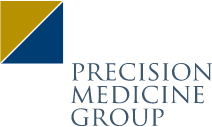First published in Pharmaceutical Market Europe
The 2020 pandemic forced our industry to essentially rethink how we function. As clinical development timelines continue to be compressed and innovation moves at breakneck speed, 2021’s winners will be companies that become adept at ‘speed chess’, where players have less time to consider their moves. These winners will think differently, embrace risk, challenge conventional norms and try new approaches.
This ‘speed chess’ approach could be a winning strategy for emerging biopharma companies (EBCs). Many factors are converging that make 2021 an exciting time for EBCs because of their novel opportunities, which are distinctly different from Big Pharma. However, they must differentiate themselves, as they are unable to use Big Pharma’s formula of scale, awareness and existing relationships to succeed. EBCs must create their own formula to stand out as they prepare to launch products.
Emerging biopharma comes of age: advantages, but also liabilities
According to an IQVIA Clinical Development Trends Impact Assessment, EBCs account for 72% of late-stage pipeline activity, up from 61% ten years ago. Private equity investment in the EBC sector is growing, in part because mature platforms make EBCs more interesting. EBCs also demonstrate positive data and are bringing novel therapies to market in complex areas of medicine, including gene therapy, CAR T-cell therapy and rare diseases. Yet, they require steady investment to keep laboratories delivering new medicines, as well as ensuring that their medicines reach healthcare providers (HCPs) and become standards of care.
Along with securing investment, they also need to improve the overall implementation of commercialisation. Since many EBCs are highly reliant on the success of one product – usually their lead compound – driving uptake and getting the product to the right patients at the right time is imperative.
Facilitating that imperative requires a strong focus on effectively communicating the science and data supporting a product’s use. It is necessary to gain understanding quickly and with many audiences. Moreover, EBCs must also differentiate themselves by how they reach and engage a wide spectrum of key stakeholders – from investors to HCPs, payers and patients.
Although they are more agile than Big Pharma, EBCs face challenges gaining HCP mindshare and trust. Physician surveys note HCPs have less in-person time, increased patient loads and spend more time on bureaucratic tasks, resulting in less time to meet with patients and pharma representatives. Big Pharma has an advantage in that it has the efficiency and scale to educate and engage HCPs and make efficient use of time by often discussing a portfolio of products.
Big Pharma’s research prowess, manufacturing and distribution capabilities and credibility of field teams that interact directly with HCPs are well established. While certain stigmas about Big Pharma exist (eg, drug pricing), the companies’ names are well known and generally trusted by HCPs and consumers. EBCs, on the other hand, have a steep hill to climb because they must introduce themselves to HCPs and consumers, while also demonstrating the science and efficacy of their products and building trust.
In today’s age of the thinly stretched HCP and sceptical consumer, EBCs have less time to accomplish all three to be successful. However, EBCs are solving many complex medical challenges that HCPs want to know about to benefit patients. The development of some key, novel personalised medicine approaches in oncology and rare diseases is a direct result of the nimbleness and agility of EBCs. But this level of nimbleness and agility comes with a price.
The challenge for EBCs will be to break through a crowded field so their science and discovery work ultimately make it to patients and lead to successful patient outcomes. With far more limited resources, they will be forced to innovate, think differently and embrace new and riskier strategies with potentially greater pay-offs, particularly in medical education, while remaining compliant.
Changing the face of medical education
To reach HCPs effectively, EBCs need to leverage technology to amplify their messages and distribute them through multiple channels. This involves embracing new modalities of communicating and trying non-traditional approaches to education. It requires better profiling of HCPs so EBCs know exactly where HCPs go for information and how and when they like to receive it.
They must utilise data to make smart decisions about how to reach and, importantly, make an impact on audiences. The question to ask is how can EBCs share data with HCPs in ways that quickly get key messages across while communicating nuanced insights. And how can they do that when those messages are delivered via non-personal channels that don’t allow for deep discussions with thought leaders, such as the standard, in-person peer-to-peer approach allows?
Take a typical head-to-head study, for example. Most often, trial data is shown as a standard bar chart comparing each product on the key endpoints. This approach requires multiple charts to explain the full story of a product’s data – and that isn’t conducive to quick-hit, non-personal channels and short attention spans. How might we reimagine a way to show the data that more quickly demonstrates comparative efficacy but also other features and benefits? What else is in the data? How can we communicate it differently so that it is more quickly understood? Given how data-saturated HCPs are, how can we break through?
One approach that made an impression was a March 2020 Washington Post ‘corona simulator’ interactive graphic, which explained social distancing and how quarantine measures work to lessen the spread. These visuals got the message across in an engaging, novel and efficient manner so that it made sense in a way that other standard, static visuals hadn’t.
Of course, social media continues to be a channel ripe for innovation and utilisation. EBCs can try things differently, communicating data and information in a new way while still being compliant. Twitter has evolved and these smaller companies will have a bigger appetite for it. It is easier for an EBC to leverage social media versus Big Pharma, which is often slower to adopt new communication channels due to the need to assess and establish company-wide policies and guidelines prior to their use.
Medical Affairs activities will continue to grow in importance
Finally, one cannot talk about future predictions without highlighting the importance of Medical Affairs activities and how that may evolve in 2021 and beyond. For EBCs to differentiate their products and ensure both clinical and economic utility, deep strategic thinking and planning must come earlier in the clinical development process. EBCs will require medical affairs teams to think strategically about the product and what must be considered down the road while also supporting HCPs with medical information.
With the growing wave of EBCs, medical affairs experts have been spread thin, leading to considerable need for external medical affairs expertise. To meet such needs, we see clinicians, after spending proper time in clinical practice, beginning to consult more heavily or leaving clinical practice for medical affairs in greater numbers. This should help EBCs form stronger bonds with the HCP community, but it still leaves a large gap in expertise in clinical development, evidence-generation planning, scientific communications and medical affairs operations. This need is growing and we predict even greater reliance on agency partners with broad medical affairs expertise to help build an EBC’s medical affairs department and processes while helping it to strategically plan and execute.
Start preparing … 2021 is coming quickly
As more EBCs vie for attention, thinking fast, taking risks and trying new approaches will be the best way to reach and impact HCPs. EBCs can take a leadership role reaching HCPs in new and better ways through data visualisation. They can also use Medical Affairs expertise earlier in the process to better prepare their products for HCPs and the market at large. Such efforts will allow EBCs to secure awareness and interest, and build trust through methods that demonstrate their clinical value.
COVID-19, for better or worse, has brought much change quickly, but 2021 will be an exciting time in our industry. We remain optimistic about the future and the ability of our industry to communicate the vital science behind cutting-edge medical innovations.







